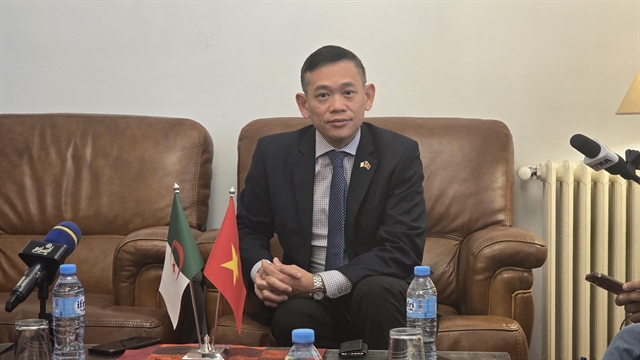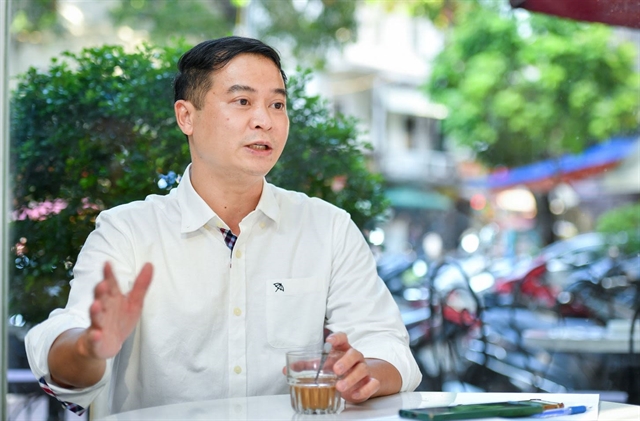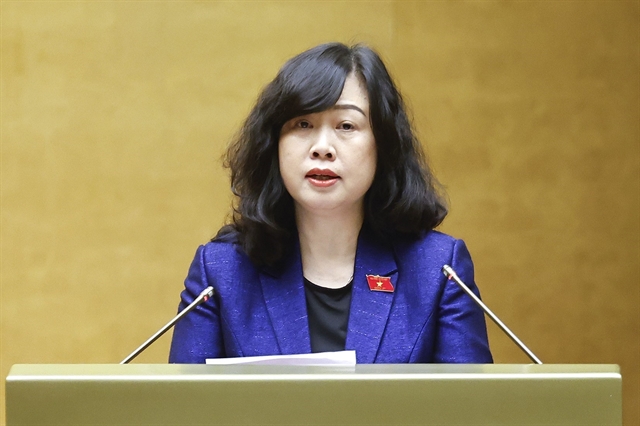 Opinion
Opinion

 |
| Vũ Trung Kiên, director of the Centre for Climate Change Response Support. — Photo nhandan.vn |
Vũ Trung Kiên, director of the Centre for Climate Change Response Support, speaks to Nhân Dân (People) newspaper about recognising carbon credits as a special commodity.
Carbon credit exchange is a new concept in Việt Nam. Could you elaborate on this model?
In fact, carbon credits have been used in Việt Nam for many years, since the country implemented Clean Development Mechanism (CDM) projects under the Kyoto Protocol as early as 2008.
Recently this concept has appeared in some cooperation projects with international partners to exchange emission credits, such as the North Central Region Emission Reduction Payment Agreement (ERPA), and the Biogas Project in Livestock.
Việt Nam can produce carbon credits and has sold them, however these transactions have not received much attention.
We want to build an exchange where Vietnamese carbon credit transactions can be implemented as a whole, with buyers and sellers.
Our goal is to demonstrate our efforts in implementing commitments in the Paris Agreement on climate change, creating a playground for the business sector to join with the State's efforts.
State management agencies can also use this to evaluate the market as well as have tools to support the management of Việt Nam's credit transactions.
At the national start-up festival Techfest 2020, you and your colleagues introduced a pilot project of carbon credit exchange, which aims to build an exchange based on Blockchain 4.0 technology for special goods such as carbon credits, green certificates and green bonds. What are your goals for this initiative?
I think it is necessary to mobilise the efforts of the entire population to contribute to the fight against climate change.
Governments themselves will not be able to reduce emissions. How can businesses and people participate?
The first priority is to create a motivating mechanism and a market mechanism for businesses to participate.
To achieve climate goals in line with Việt Nam’s international commitments, large capital resources are needed.
The carbon credit market is an important source of capital to help businesses and the country's economy transition from brown (resource-based) to green, both reducing greenhouse gas emissions and creating motivation and profits for businesses and the country.
This concept is quite new to many people in Việt Nam, but in fact carbon credits have been traded since 2008 under the CDM.
However, on an overall national level, there has not been any specific mechanism.
The participating ministries and sectors are not really proactive and do not have a strategic perspective to turn the economy from brown to green.
At Techfest 2020, my colleagues and I introduced the Carbon Credit Exchange, aiming to build an exchange based on Blockchain 4.0 technology for special types of goods such as carbon credits, green certificates and green bonds.
We believe it is necessary to recognise the carbon credit market as a strategic factor to promote Việt Nam's economy in the future, in which the two pillars are Green and Digital.
These are also two factors where the carbon credit exchange holds the advantages.
After a trial operation, what lessons have you learned to help you build an official carbon credit exchange in Việt Nam in the future, following the Government's direction?
It should be clear that our experiment is a voluntary market effort to help participating businesses contribute to the country's common goals, and support activities and commitments of the Government to international compliance markets.
After testing, we have gained valuable lessons and experiences, as well as adapted appropriately to Vietnamese market conditions and policies.
The first lesson is that it is necessary to meet the conditions and synchronise many items to be able to support the development of both sides of the market, both the seller and the credit buyer.
We realise that to successfully build carbon credit trading platforms, it is necessary to have a future vision, combined with continuous learning from existing models in the world, adapted to Vietnamese conditions.
Another lesson is the importance of policy. For example, the platform based on blockchain technology has been completed and is ready to be put into operation, but needs to be consistent with Vietnamese policies and conditions.
How do you assess the potential of Việt Nam’s current carbon market?
Việt Nam has great potential to build a carbon market. We have a number of advantages in industries that reduce and eliminate carbon dioxide.
But we must take advantage of time; the deadline is approaching quickly.
Currently, the rate of Vietnamese businesses understanding and implementing greenhouse gas emission inventories is very low, less than 1 per cent compared to the list of 1,912 businesses required to inventory, not to mention hundreds of thousands of companies.
What difficulties will the development of the domestic carbon market face?
First of all is the domestic legal framework and international requirements.
Second is the participation of stakeholders, especially businesses that are responsible for reducing emissions. The Government can make international commitments, but the actual reduction depends entirely on the efforts and participation of businesses.
In addition, I think that financial resources and technological innovation are also huge challenges.
It is necessary to pay attention to credit prices. According to our statistics, Việt Nam has 262 projects selling carbon credits under the CDM mechanism, which are mainly hydroelectric projects.
In the forestry sector, there have been a number of projects that sell credits. In six north central provinces, they sell carbon dioxide at a price of US$5 per tonne to the World Bank. There are also a few other forestry projects selling carbon dioxide at $17 per tonne.
These prices vary widely depending on the project and buyer. This is also the inconsistent status of the world carbon market.
Many think the State needs to issue more regulations on carbon credit exchange and connection to make the market transparent, able to meet international requirements. What do you think about this?
For the carbon credit market, the trend of deregulation is important. The State should not issue too many regulations.
For new things, guidelines should be provided and international standards should be applied to encourage the spirit of participation, and daring to think and do.
I think the State only needs to guide, honour and encourage pioneering businesses to meet international standards, which will create a wave of excitement when businesses see the benefits, thereby helping our country achieve the emission reduction target as committed to the world community. — VNS




